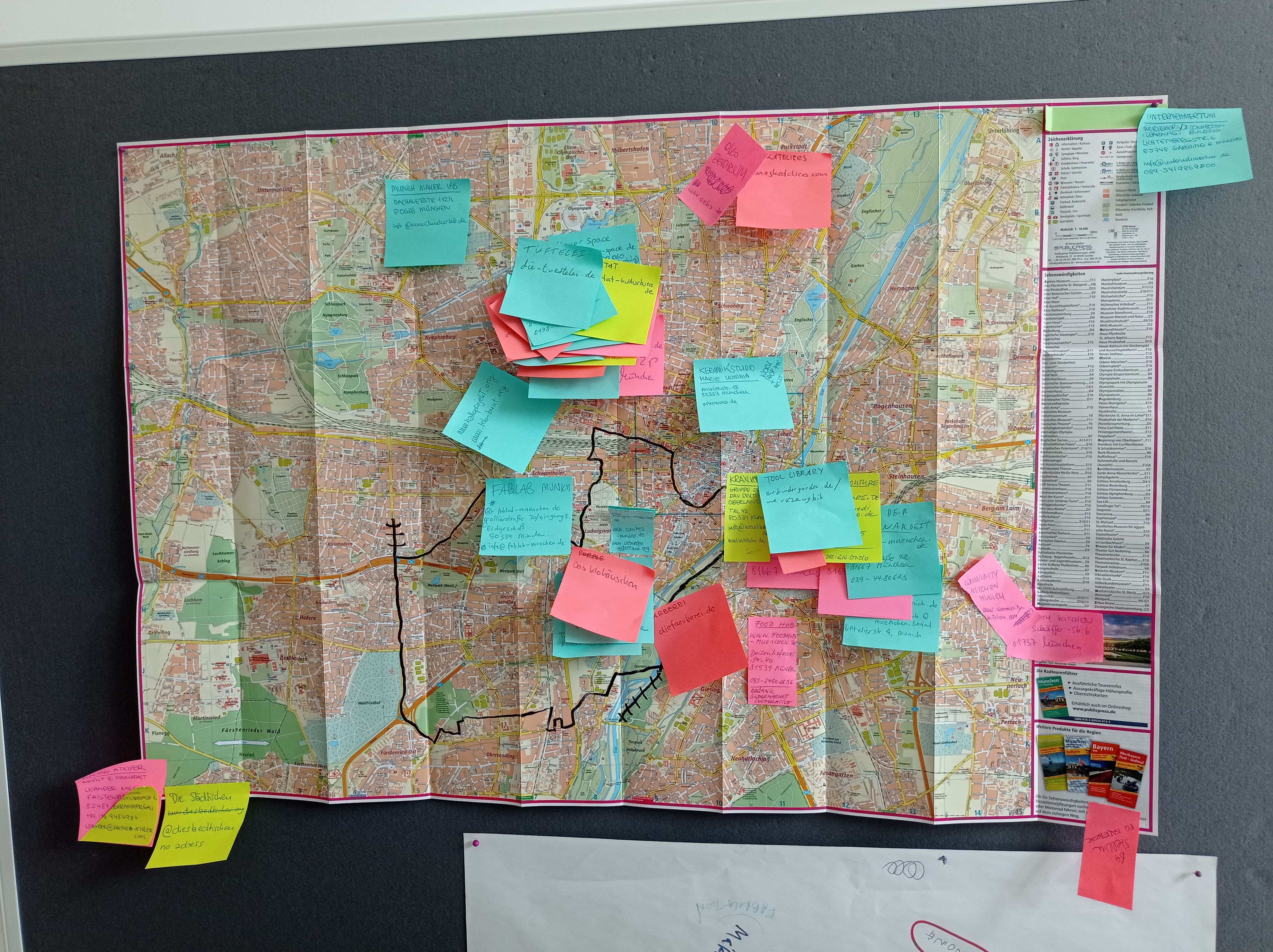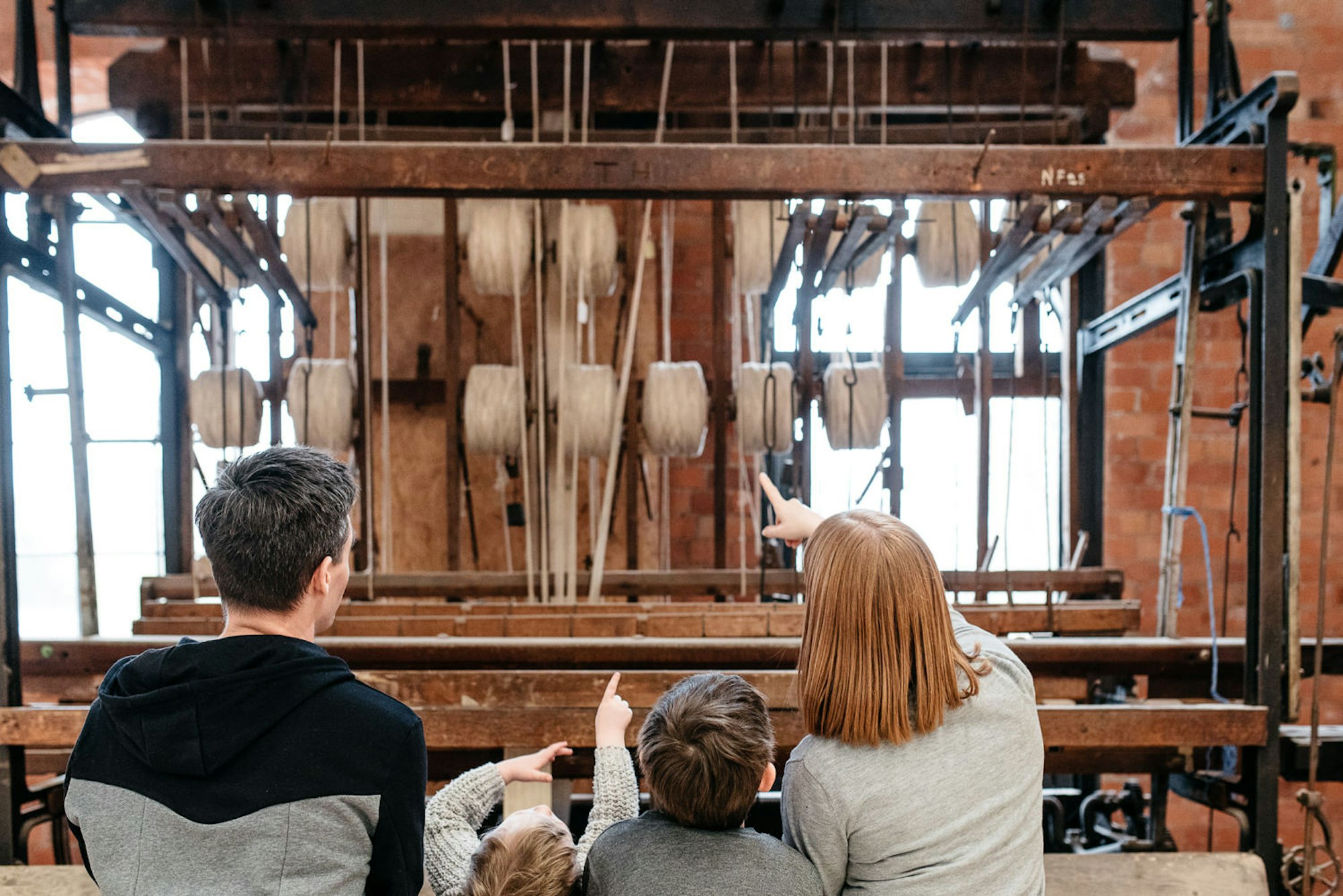Stories / Inspiration /
Make Works speak with hardware startup, Tingbot about sourcing manufacturing in the UK.

In just three days, a team of five designers and makers, known as Nord Collective, have managed to reach an impressive 25% of their Kickstarter goal. Their ambition is to manufacture Tingbot, a piece of kit that transforms your Raspberry Pi into a platform for creative applications.
Nord Collective have been working hard to find local UK based suppliers, fabricators and factories to work with so that they can get Tingbot into production when they (no doubt) reach their Kickstarter goal. We’ve been speaking with founder, Ben Pawle, to find out more about the experience of sourcing manufacturing closer to home, and to see if he has any advice for emerging makers hoping to put their products into production.
1. So Ben, tell us, what is Tingbot?
Tingbot is a kit product that is built around the Raspberry Pi. For those unfamiliar with the Raspberry Pi, it’s a small business card-sized computer and was designed to make coding and technology accessible to all, lots of people bought into the dream of Raspberry Pi, but few people have really created anything that brings out its full potential, and more often than not, they’ve been living in drawers since.
So we made Tingbot, an internet-connected product that lives in your home or on your desk. We’ve built our own custom hardware and software to transform your Raspberry Pi into a platform for creative applications. A way to make fun things, get coding and share amazing, inventive and novel apps. It comprises a custom PCB and touchscreen, programmable push buttons, bespoke case design and our own OS and development environment.

Whether you’re new to code or an experienced developer, we believe Tingbot has something to offer everyone; anyone who wants to experience the fun and joy of being creative with technology. You can design graphics, draw, connect to simple data feeds and make fun interactive apps. Use the touchscreen to make a doodle pad or make the programmable buttons control a robot. You’re free to make anything. We even built our own software to give you the tools to do so, making it easy to write your own apps and send them straight to Tingbot without any fuss. Even I’ve managed to make a few Tingbot apps and I don’t even know how to code!
2. What are the different materials and processes you’ll be needing to get Tingbot into production?
We’ve kept the design of Tingbot as simple as possible to avoid production complications. We kept it a kit product because kits are fun, but the knock on of this means we reduce our assembly requirements. We have tried to be smart about the materials and processes we’ve adopted so as not to add unnecessary cost to the product (and ultimately our customers). We’re using polypropylene sheet for the outer shell, a material called priplak. It’s got a lovely finish and lends itself nicely to being laser cut and folded. The side caps on the casing are currently prototyped using SLS 3D printing technology but will be injection moulded. We’re pretty excited that these parts will probably be produced in the UK too :)

The hardware is a little more complex. Duncan’s done a splendid job hand soldering our prototypes. In reality the components will be much smaller and will require some pretty sophisticated pick and place machines.
3. We know that you’re already in conversation with a number of UK based manufacturers. What has the experience of finding, and then working with these companies been like?
Finding anything online isn’t easy. Our first stop was google and sites like Alibaba which list almost anything you can ever think of. We were able to explore our options for manufacturing the casing and begin sourcing suppliers for parts quotations. Communication was proving a problem and a lot of prototypes just weren't up to standard so I spoke a lot with a more senior product design colleagues who were really helpful in giving advice and recommendations.

In the end we were able to short list a few closer to home and our experience liaising with them has been really great. Communication has been way easier compared to the far east, and they’ve been really proactive and helpful in their feedback about our design files. We’re really looking forward to continuing this working relationship and to be able to produce a first run of Tingbots!
4. We’ve seen that you’ve already produced some pretty impressive prototypes, what can you tell us about the prototyping process? Did you get involved in any of the making yourself?
Yes - lots of making! Prototyping began with the hardware itself. Using prototyping tools, breadboards and an off the shelf touchscreen to see if we could mock up our Ting.it experience. When this worked Duncan then started designing his own custom module, sourced the components and then painstakingly hand built them. The casing has gone through many iterations, from early cardboard (weetabix box) models to house our components, to hand-cut plastic and foam models.

As our designs became more refined, we began using a Makerbot to print and test them. I’m not sure if you’ve used these before but I remember being so impressed at first, but then when you print multiple copies of the same part, you realise how inconsistent they are - so we started working with 3D Print UK who make beautifully accurate SLS prints. Cut Laser Cut have helped us nail down our outer case wrap, getting the fold lines the exact depth and allowing for the living hinge to stretch took a few goes but we’re pretty happy with the final result!

One thing about Tingbot we’re really chuffed with is the consideration that’s gone into the design itself. We’ve reduced the complexity with every prototype, using as few parts as possible. The hardware and case have been developed in tandem to ensure there is no compromise on aesthetics; we’ve centered the screen, got the perfect viewing angle, re-routed the power and kept our style clean so that the end result is as satisfying to the eye as it is to use.
If all this talk of SLS has made you curious you can check out our Guide to 3D Printing here
5. It’s great to hear that you’re making efforts to manufacture locally. Do you think that it’s viable to produce something like Tingbot entirely in the UK? Or is local production still something that you’ll be paying a premium for?
So far I really rate the UK manufacturing industry. It’s been very easy to discuss the project and our needs. Although we’ve yet to move on to larger scales of production, our experiences so far working with UK suppliers have been excellent. There is of course a trade off in price. The quotes we received from overseas are about half the price of UK based firms. However, from experience they can also require double the time to manage, wasting a lot of time and energy, and if you have to do a visit - there’s a great deal of cost involved in that.

So sometimes they can work out about a similar cost, the UK firms just have a tougher time competing on face value of an initial quote. One thing we haven’t been able to match in price is the one-off circuitry prototyping, the price difference and competing quality we have received from overseas is really difficult to match on a shoe-string budget when looking at small run sizes.
Good luck to the Tingbot team! If you would like to get your hands on a Tingbot of your own, or to support the team check them out on Kickstarter

On Make Works you’ll find two companies that could support Ben and the Nord Collective in the production of Tingbot; European Circuits who are an integrated electronic assembly manufacturer (including printed circuit boards) and FifeX, fabricators near Dundee, who primarily build one-off interactive products for clients, but can also provide an electronics assembly service for short production runs.
Categories
Inspiration
Related stories
Day 23 | Make Works Residencies 01 | Catching up with Katy West
Craft Scotland Conference
Happy International Women's Day!
Material Monday - Woven Polypropylene
Maker Speed Dater



